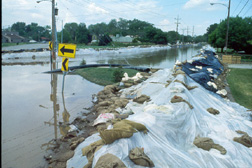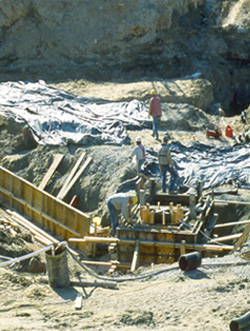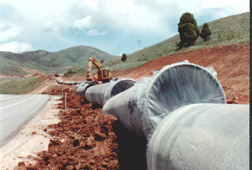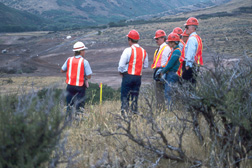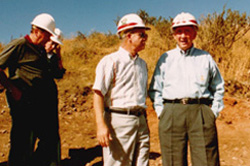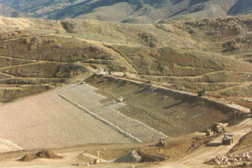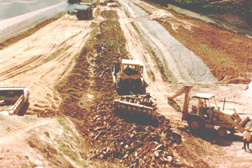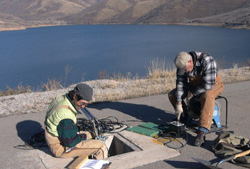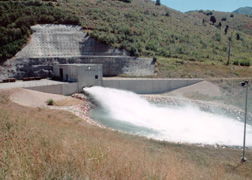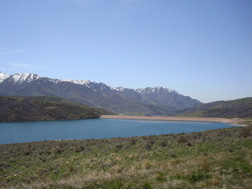Little Dell Project CompletedThe Corps of Army Engineers determines final cost allocation to close out project July 8, 2007 After nearly 60 years, the Little Dell Project is completed with the final accounting of the cost allocation between the local sponsors and the federal government. The 20,500 acre-foot reservoir costs are allocated between flood control, water supply and recreation benefits under a 1986 Local Cooperation Agreement (LCA) and subsequent amendments. The Salt Lake City Public Utilities Advisory Committee heard a briefing on the Little Dell Project at their June 28, 2007 meeting. “Its been 14 years since the project was completed and we’ve been working with the Army Corps of Engineers to finish the accounting,” said Metropolitan Water District of Salt Lake & Sandy (MWDSLS) general manager Mike Wilson. “... and just in the past few months we have come to resolution of the accounting and Metro received a $640,000 check within the last month. They still owe us $52,000.” MWDSLC and Salt Lake County are the two local sponsors of the project. Salt Lake City donated the land for the project, and the Salt Lake City Department of Public Utilities operates and maintains the project in unison with its 3,000 acre-foot Mt. Dell Reservoir under an interlocal agreement with the sponsors. General Counsel Joe Novak told the Advisory Committee that in 1986, June 10 Metro entered into an interlocal cooperation agreement with the Corps of Engineers. The estimated cost for the project was then $49.3 million. The cost allocated to the water supply was to be fully repaid by the local sponsor; the cost allocation for the flood control was 25 percent by the local sponsor and the balance by the United States. There was no recreation included in the project at the time. Novak noted that as the Project proceeded, “The construction cost kept going up, up, up and up … ending at $63,864,932." In order to get relief from the growing costs, Metro introduced legislation in Congress that would have limited the Metro’s cost to $11.5 million. “But that never got through,” said Novak. Then a bit of luck, Metro hired an ex-Corps of Engineers employee to review the project. Boris Stienberg, who had a consulting office in Washington concluded that the criteria in 1980 provided for the Corps to pay as federal cost, a 100 percent of the joint costs allocated to recreation. “So the result of this finding was to incorporate recreation into the project, which reduced the cost allocated to M&I,” said Novak. The need for additional mitigation lands and the reallocation of costs led to the delays in finalizing the project. With the final accounting the Army Corps of Engineers made the final allocation of costs between the local sponsors and the federal government. The total cost of the project is $63,864,932 and the water supply allocation to Metro is $11,736,894 (excluding the value of the lands). The benefits of the Little Dell Project were averred by Public Utilities deputy director Jeff Niermeyer. “I’ve been on the operating side of it. I’ve seen the flood control benefits where we have been able to … prevent flooding on 13th South. It would have happened in 1997 and probably in 2005 where we would have had significant flooding if it were not for the Little Dell Project.” Another benefit is increased water supply, which help alleviate the 1992 and the recent 1999 - 2004 droughts. “The fact that we had significant more stored water in Parley’s Canyon really helped mitigate the impacts of drought,” said Niermeyer. Niermeyer also noted that there is 60 acres of land on the Jordan River that is permanently protected from development as mitigation offsets; as well as the additional mitigation land located along Parley’s Creek from approximately SR 36 along the north side of the golf course to Alexander Creek. “That corridor is now protected with a conservation easement.” said Niermeyer, “as well as the original mitigation lands that are on the upstream side of the pool in Little Dell between 124 – 127 acres of watershed and Jordan River lands are now permanently protected.” Historic Key Decision Dates
Picture History of the Little Dell Project
|
